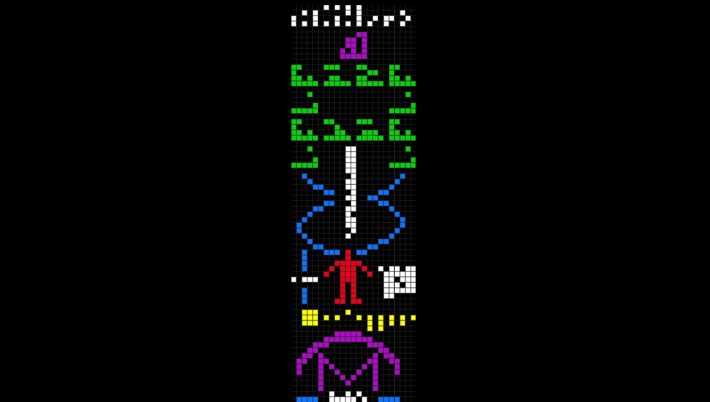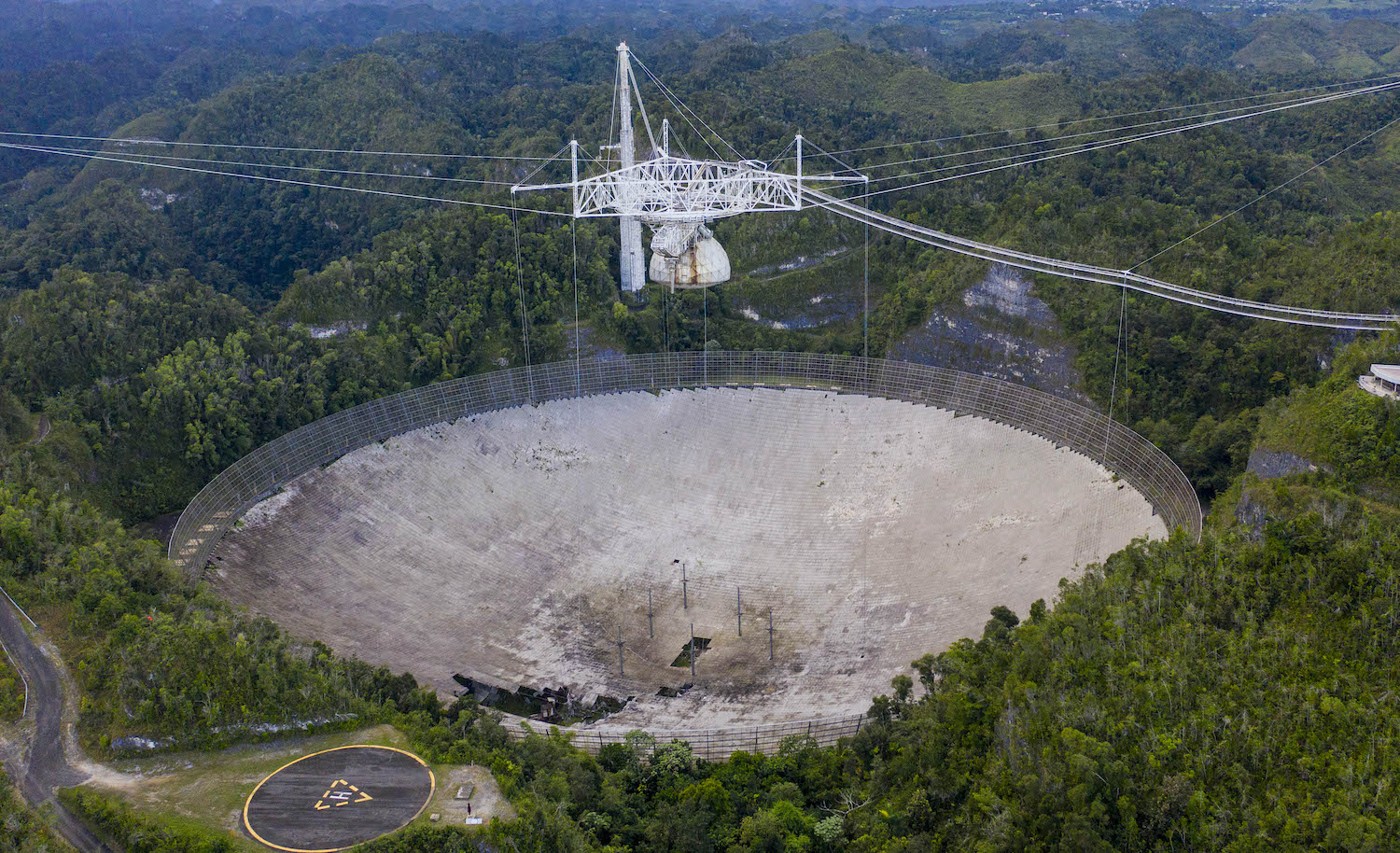Forty-six years ago this month, humankind opened its mouth to the cosmos and shouted, "We're here."
The Arecibo Observatory hosts the most famous telescope in the world, a 1,000-foot dish nestled into a natural limestone sinkhole atop a mountain in Puerto Rico. An otherworldly collection module is suspended 500 feet above the white curved surface, though there is very little about the radio telescope that one would describe as terrestrial. It is built into a hole in a mountain, but for five decades, it was humankind's biggest and most productive keyhole to the stars. It survived earthquakes and hurricanes. Now, it will be closed forever.
A pair of catastrophic cable breaks this year have damaged the telescope beyond repair, and the National Science Foundation announced on Thursday that the telescope would be shut down for good. In August, an auxiliary cable that helped support the suspended platform snapped and whipped onto the surface of the telescope, damaging "about 250 of the 38,778" aluminum panels below. In early November, one of the 12 main weight-bearing cables also snapped, seriously compromising the structural integrity of the delicate instrument. Five teams of engineers assessed the strains on the 11 remaining cables and determined that any more cable breaks would lead to the total collapse of the platform. Both failed cables were attached to the same tower, which means that the surviving cables are bearing an outsized amount of weight. Any repair effort risks a total collapse. “Until these assessments came in, our question was not if the observatory should be repaired but how,” Ralph Gaume, director of the astronomy division of the National Science Foundation, said. “But in the end, a preponderance of data showed that we simply could not do this safely. ”
The telescope at Arecibo was completed in 1963. Construction was funded by both DARPA and the Air Force Research Laboratory, which is why it also has a planetary radar system initially intended to help physicists learn about the unique radio signatures of incoming nuclear warheads. Almost immediately after the facility got up and running, scientists began discovering heretofore unknown things about the solar system and the frontier beyond.
Within six months of operation, scientists learned that Mercury's rotational period was a month shorter than hypothesized. Four years later, they found the first solid evidence for the existence of neutron stars. The telescope also helped furnish the discovery of exoplanets and prebiotic molecules in far-off star clusters. But Arecibo is most famous for its central role in SETI, the search for intelligent life in the universe. Legendary astrophysicist Frank Drake served as the director of the lab for years, and in 1974, he used the telescope to beam a message about human civilization out into the stars.
(Drake also developed the Drake Equation, an attempt to calculate, given a set of somewhat immeasurable parameters, how many technologically advanced species exist in the Milky Way. When plugged into a streamlined version of the equation, recent exoplanet discoveries have led scientists to conclude that the solution to the equation is almost certainly not zero. “One in 10 billion trillion is incredibly small,” said University of Rochester astronomer Adam Frank. “To me, this implies that other intelligent, technology producing species very likely have evolved before us. Think of it this way. Before our result you’d be considered a pessimist if you imagined the probability of evolving a civilization on a habitable planet were, say, one in a trillion. But even that guess, one chance in a trillion, implies that what has happened here on Earth with humanity has in fact happened about 10 billion other times over cosmic history!”)
The Arecibo Message was sent on Nov. 16, 1974, from Puerto Rico to a cluster of stars known as M13. The stars are 25,000 light years away, so humanity won't get an answer until 50,000 years into the future at the absolute earliest. The message, which Carl Sagan helped write, consisted of 1,679 ones and zeroes arranged in such a way as to give a tidy picture about humans, our solar system, and the very telescope from which it was sent.

Arecibo housed the largest telescope in the world until 2016, when the Five-hundred-meter Aperture Spherical Telescope (FAST) was built in Guizhou, China. While that telescope is larger, Arecibo had enhanced radar capabilities that it made it the most essential instrument in asteroid detection. But the Extremely Large Telescope (yes, that is what it's called) will also be ready by 2024, and will be the world's largest optical telescope. Humanity's inquiry of the stars will continue well after its first beacon goes out.






